I am sitting in my music studio, a few days into a month residency at MacDowell in New Hampshire. Outside is icy cold; the snow leans up against the studio and icicles hang off the small moss-covered shed roof.
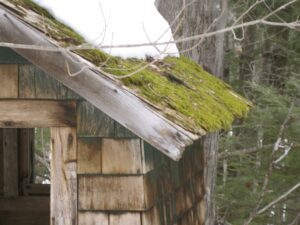 I sigh and drum my pencil on the blank score paper. All morning I have been procrastinating, unable to move forward in composing my next work. I am caught in the bardo of creation – between not knowing and, at the same time, sensing the direction of the piece.
I sigh and drum my pencil on the blank score paper. All morning I have been procrastinating, unable to move forward in composing my next work. I am caught in the bardo of creation – between not knowing and, at the same time, sensing the direction of the piece.
I wait and close my eyes, thinking about summer and soft warm dirt between my bare toes, the color a milk chocolate. In my mind’s eye, I turn and spin, remembering that Moses, as he approached the burning bush, took off his sandals to stand on holy ground.
Of course! Barefoot. The sound of the new work wells in my ears; I am flooded.
I grew up as a pianist in a household of strings. My mother was an avid amateur violinist and my sisters played violin and viola. I envied their ability to play with others, while I was continually on my own. In college, I took up cello in addition to studying composition and piano. I studied with Michael Finkle, who was mustached, quirky, and full of joy. We gathered weekly to play cello quartets and octets late into the evening. Then, turning off the lights, we improvised in the dark.
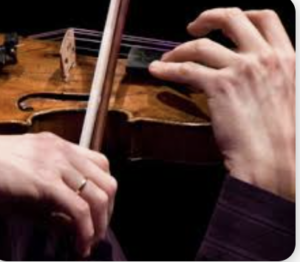 My ear is always bending towards the sound strings produce when I compose. The instrument itself is an ingenuity of construction – as one plays, the open strings resound, building up a deepening of sound – like a piano’s sustaining pedal, but discrete and selective. The resonating strings respond like ghosts to a call, building up overtones and harmonics, even different tones.
My ear is always bending towards the sound strings produce when I compose. The instrument itself is an ingenuity of construction – as one plays, the open strings resound, building up a deepening of sound – like a piano’s sustaining pedal, but discrete and selective. The resonating strings respond like ghosts to a call, building up overtones and harmonics, even different tones.
I love the immediacy a string player has between themselves and the sound they produce. Pressing the flesh of their finger into string, they bow to bring the pitch to life. With this comes the unique ability to bend a note easily through a glissando. This is aslide between notes, not a fast get-away, but a way of directing energy from one note to another. Sometimes I want to pierce through a note cleanly, like an arrow through the heart. Other times, I move between two notes, creating a slow-motion tension, where the departing note comes so close to the next note that union is magnetic and unavoidable.
The string instrument is a master of getting to the kernel of sound by varying the way a sound is made. Pizzicato and tremolo are most common, but, for me, ponticello (playing close to the bridge to make a scratching, buzzing sound) and col legno (reducing the sound to a bare shadow of itself by playing with the wood of the bow) gets closer to what I experience in a single note or tone – an outer shell-like-flesh with a soft inner core.
sound to a bare shadow of itself by playing with the wood of the bow) gets closer to what I experience in a single note or tone – an outer shell-like-flesh with a soft inner core.
I am always composing towards the center of sound, to get as close as I can. And always, in a stream of movement, a consciousness liquid enough to become something else at any moment. Lean and snake-like, my music is continually circular and linear, transforming in a seamless continuity.
String writing in Barefoot
LISTEN: https://lnkfi.re/barefoot
Tremble for violin, cello and piano, has no end of movement – we shiver in delight or quake in fear. We shake in anger or pulse in love. We tremble in the act of knowing and not knowing.
Barefoot for violin, cello, viola and piano is cold and full of fresh snow, and always a longing for bare feet on green forest paths and creek beds. The dashing out and tasting life with little protection, the dancing before the burning bush – barefoot before God.
Wēpan for string quartet and piano is full of slippage from one note to another – glissandos between note to note; weeping, endless weeping.
Hush for violin and piano is quiet and reflective – a sweet calming of our child, ourselves and those around us – a stillness so that life can be experienced, cascading around us.
Leap, for violin, cello, viola and piano, was written during the pandemic when we found ourselves having leapt into a world unrecognizable. Restless and often sudden, the strings echo each other, searching and slightly out of tune.
Tina Davidson’s new album Barefoot, featuring the Jasper Quartet and pianist Natalie Zhu, is released on New Focus Recordings.
 , religion, education, or just being at the wrong place at the wrong time), break in through the back door or window. No matter how you get in, you are in.
, religion, education, or just being at the wrong place at the wrong time), break in through the back door or window. No matter how you get in, you are in. ars. When I got a commission from the Kronos Quartet, that and my savings allowed me to launch into being able to compose full time.
ars. When I got a commission from the Kronos Quartet, that and my savings allowed me to launch into being able to compose full time. Share your joy.
Share your joy.
 Heave your heart into your mouth – often.
Heave your heart into your mouth – often.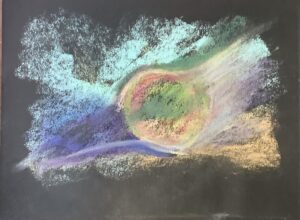
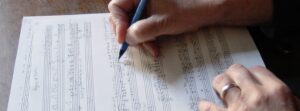 There, right there is the magic – that lift, as if you were about to fly. The upward motion pulls at gravity. I am a kayak, rushing downstream only to hit a rock. As I fly in the air, the suspension seems longer than possible; my heart stops beating for a endlessly long moment – time is distorted.
There, right there is the magic – that lift, as if you were about to fly. The upward motion pulls at gravity. I am a kayak, rushing downstream only to hit a rock. As I fly in the air, the suspension seems longer than possible; my heart stops beating for a endlessly long moment – time is distorted.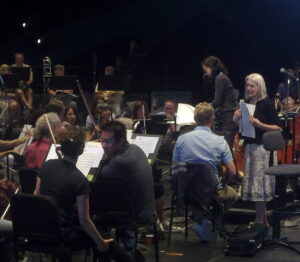 In the music world, a new piece is premiered after working with the performers in rehearsals. We confer about tempos, do a last bit of editing, talk about the musical heart of the piece and how to express it. At the performance, I introduce the work to the audience, or do a pre-concert presentation. But mostly, I am in the audience, listening. I stand for the applause, usually from my seat, or bound up to the stage for a quick bow. During the intermission and after the concert, a few audience members warmly clasp my hands. But most of them dodge around me. Did they not like my work? Or is it too vulnerable to express an opinion face to face?
In the music world, a new piece is premiered after working with the performers in rehearsals. We confer about tempos, do a last bit of editing, talk about the musical heart of the piece and how to express it. At the performance, I introduce the work to the audience, or do a pre-concert presentation. But mostly, I am in the audience, listening. I stand for the applause, usually from my seat, or bound up to the stage for a quick bow. During the intermission and after the concert, a few audience members warmly clasp my hands. But most of them dodge around me. Did they not like my work? Or is it too vulnerable to express an opinion face to face?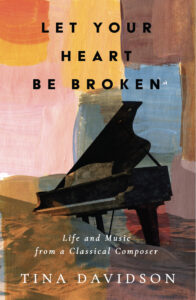 podcasts, interviews, and book tours. I get emails, messages or posts from readers, sometimes several over a week, letting me know they are halfway through, almost done, they couldn’t put it down until 4 AM. It reads like a thriller, has a musical lilt, they resonated with my words. I have introduced them to contemporary music, articulated something about composing andmy deep relationship to sound – I have put words to an art form that is generally wordless. They feel let in.
podcasts, interviews, and book tours. I get emails, messages or posts from readers, sometimes several over a week, letting me know they are halfway through, almost done, they couldn’t put it down until 4 AM. It reads like a thriller, has a musical lilt, they resonated with my words. I have introduced them to contemporary music, articulated something about composing andmy deep relationship to sound – I have put words to an art form that is generally wordless. They feel let in.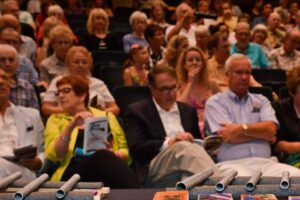 performing abilities. The works they perform are primarily historical, often hundreds years old, and referred to as masterpieces. Contemporary music – our living culture – is not performed with any regularity.
performing abilities. The works they perform are primarily historical, often hundreds years old, and referred to as masterpieces. Contemporary music – our living culture – is not performed with any regularity.